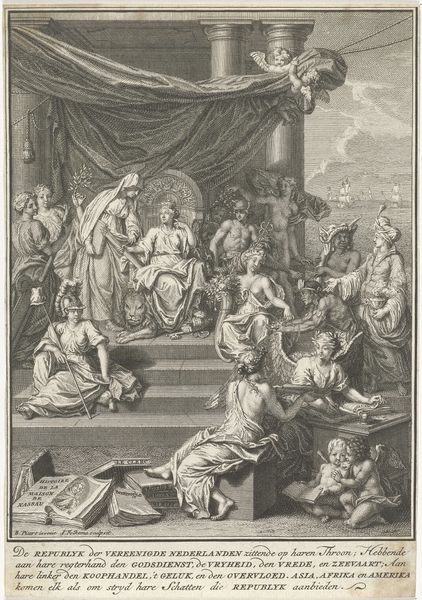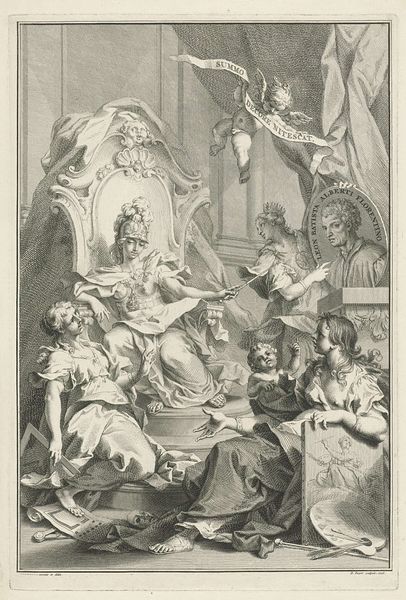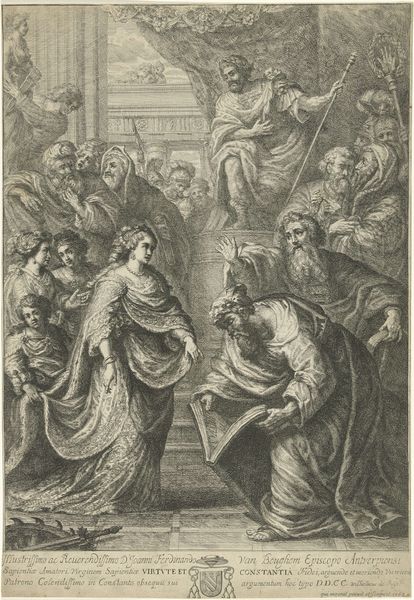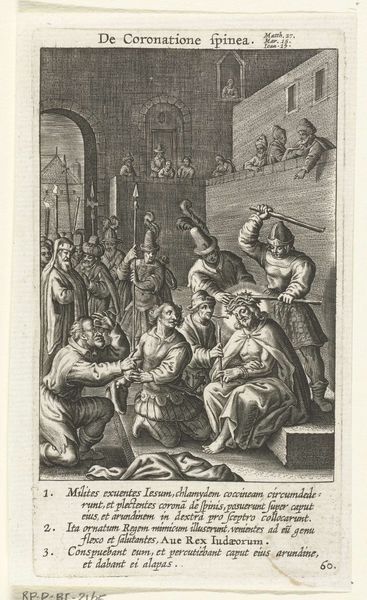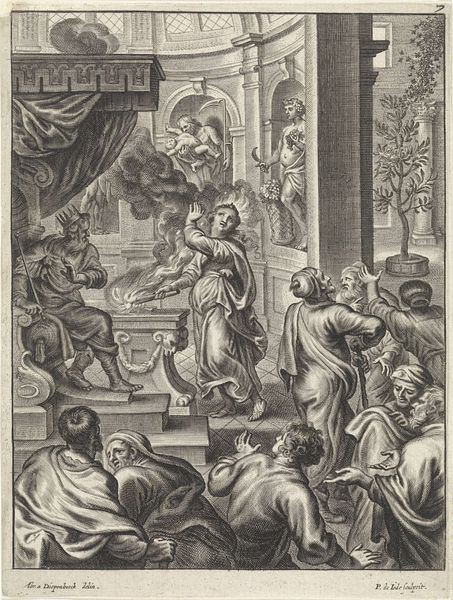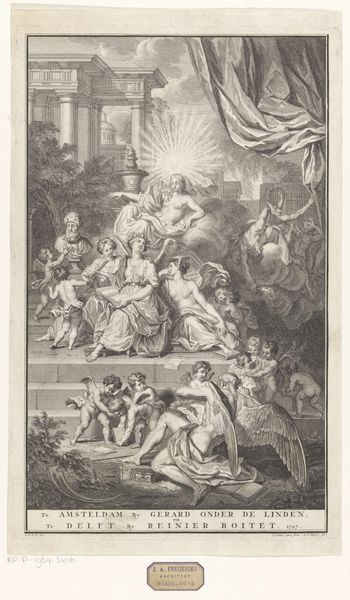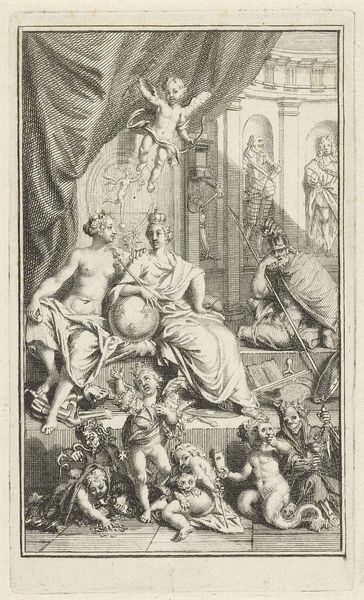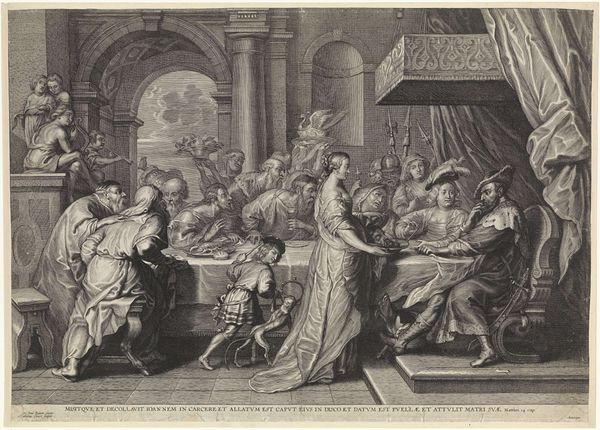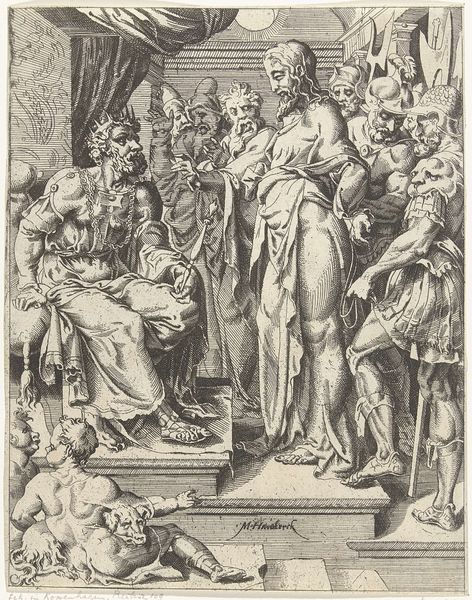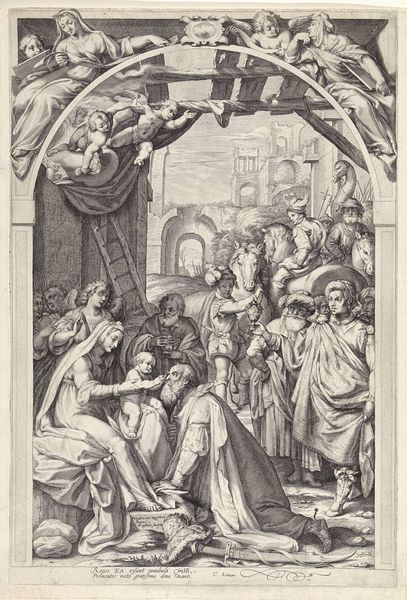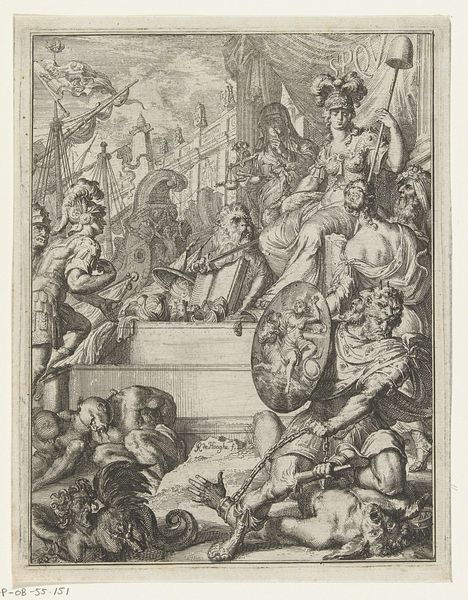
drawing, print, pen, engraving
#
drawing
#
narrative-art
#
baroque
#
pen drawing
# print
#
pen illustration
#
pen sketch
#
figuration
#
pen
#
history-painting
#
engraving
Dimensions: height 128 mm, width 84 mm
Copyright: Rijks Museum: Open Domain
Curator: Welcome. Here we have "Attack on Enthroned Easterner," an engraving by Simon Fokke, created sometime between 1722 and 1784. Editor: It has a theatrical air. The high contrast of light and shadow gives it drama, like a scene from a play caught mid-action. All of the lines are quite assertive. Curator: Indeed. Fokke’s engraving captures a tumultuous moment, likely rooted in orientalist fantasies common during the period. We can see this reflected in the imagined Eastern ruler and the threatening display of swords, all staged within a seemingly chaotic court. What statements were being made here about cultural power and control? Editor: If you consider the visual weight, your eyes are drawn toward the center of the composition: the ruler, framed by the architecture, which intensifies her isolation. The use of diagonal lines reinforces the idea of disarray and an attack on her status. It gives a feeling of unstable hierarchy. Curator: The detail is intriguing, considering the political and cultural anxieties of the era. The ruler is depicted as vulnerable. We are confronted with complex intersections of power, gender, and cultural identity—an invitation for viewers to question not only the historical context of the piece, but its modern-day reverberations in our understanding of identity. Editor: Considering the formal aspects, the engraving technique itself, with its precise and controlled lines, strangely juxtaposes the volatile subject. It's this tension that gives the piece its energy, don’t you think? A sense of a violent rupture straining against the crafted surface. Curator: Exactly! Through today’s lens, “Attack on Enthroned Easterner” can foster a more profound consideration of colonial power dynamics. The piece stands as a reminder of how art both reflects and actively shapes societal perspectives. Editor: So, Fokke's work is not just an historical document; it also shows the intersection of craft and intention and, on top of it all, has a visceral quality. Curator: Absolutely, it holds up a mirror to past injustices, promoting an urgent discussion about present-day systems of inequality. Thank you for exploring that with me today!
Comments
No comments
Be the first to comment and join the conversation on the ultimate creative platform.
